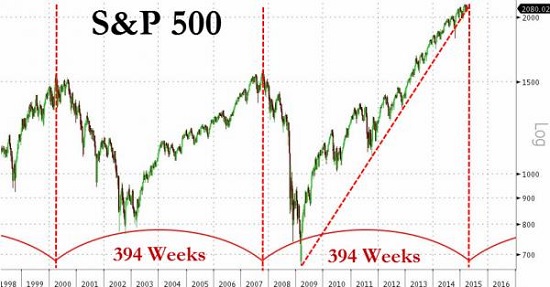The Scariest Halloween Stock Market Chart
October 31, 2015
The stock market's advance is immortal--isn't it?
What would Halloween be without a scary chart of The Stock Market That Cannot Die? We know the stock market cannot die because we're constantly told it's immortal:

You know the drill: the Federal Reserve will never let the market fall, never, never, never: it will continue to loft higher for all time, in immortal glory.
Like a blood-sucking vampire, the market is parasitically feeding off the real economy. As the host weakens, the parasite increases its control. Now the market is telling the real economy: if I die, you die, too.
The entire Status Quo is now utterly dependent on a rising stock market: not just for the illusion of the wealth effect, but for tax revenues, pension fund stability, and the fantasy that a rising market is a substitute for a healthy economy.
It's terribly frightening to be in thrall to a parasite that will bleed its host dry to maintain itself. But that's not the scariest possibility.
The scariest possibility is that the stock market will fall despite all the promises that its advance is immortal.
If this were to happen, all those "safe" index funds would implode along with the broad market.
One of my pumpkins whose entire 401K retirement account is in "safe" S&P 500 index funds looked at the chart above and completely lost it. The possibility that the market is not only not immortal but might be poised for a staggering decline can drive even the most trusting investor to drink:

NOTE: Contributions/subscriptions are acknowledged in the order received. Your name and email remain confidential and will not be given to any other individual, company or agency.
|
Thank you, Simon L. ($50), for your monstrously generous contribution to this site -- I am greatly honored by your support and readership. |
Thank you, Randy I. ($10), for your much-appreciated generous contribution to this site -- I am greatly honored by your support and readership. |

Discover why Iím looking to retire in a SE Asia luxury resort for $1,200/month.